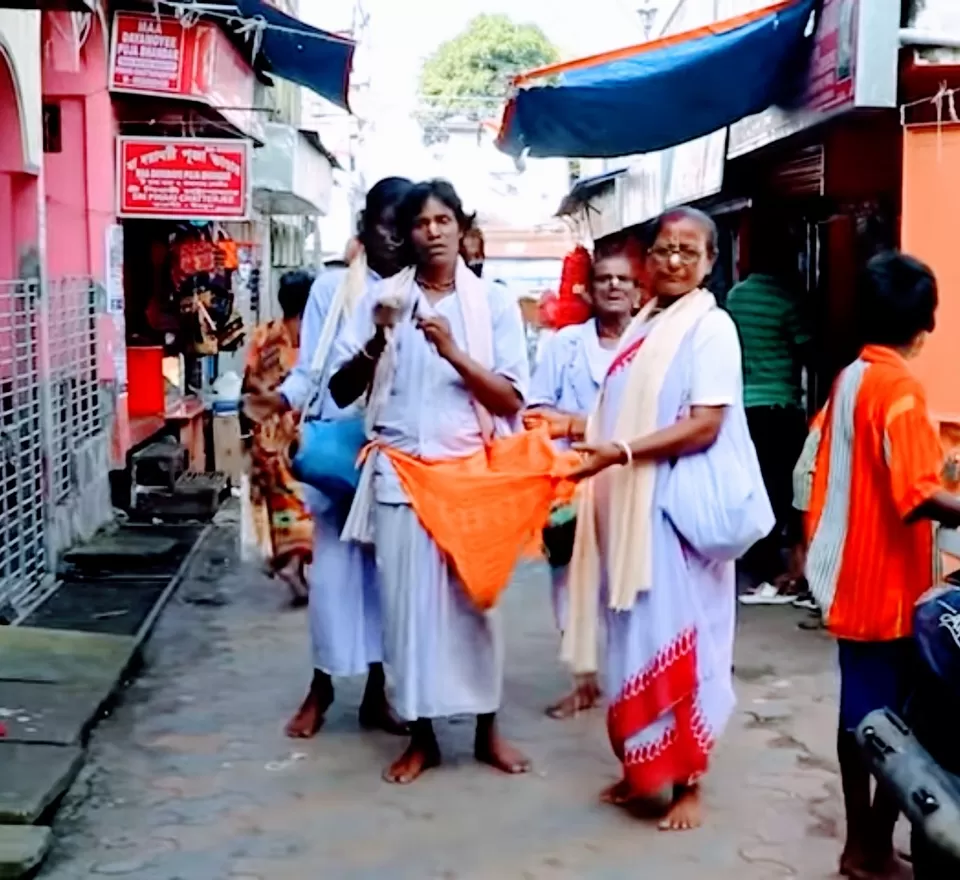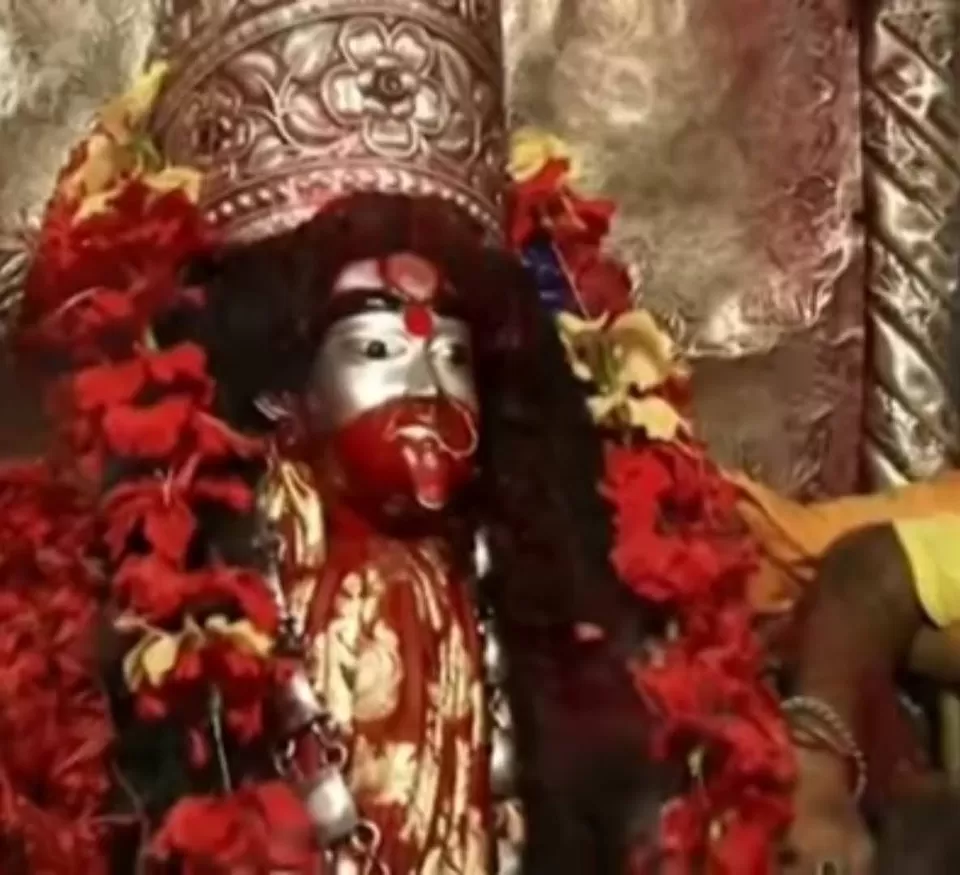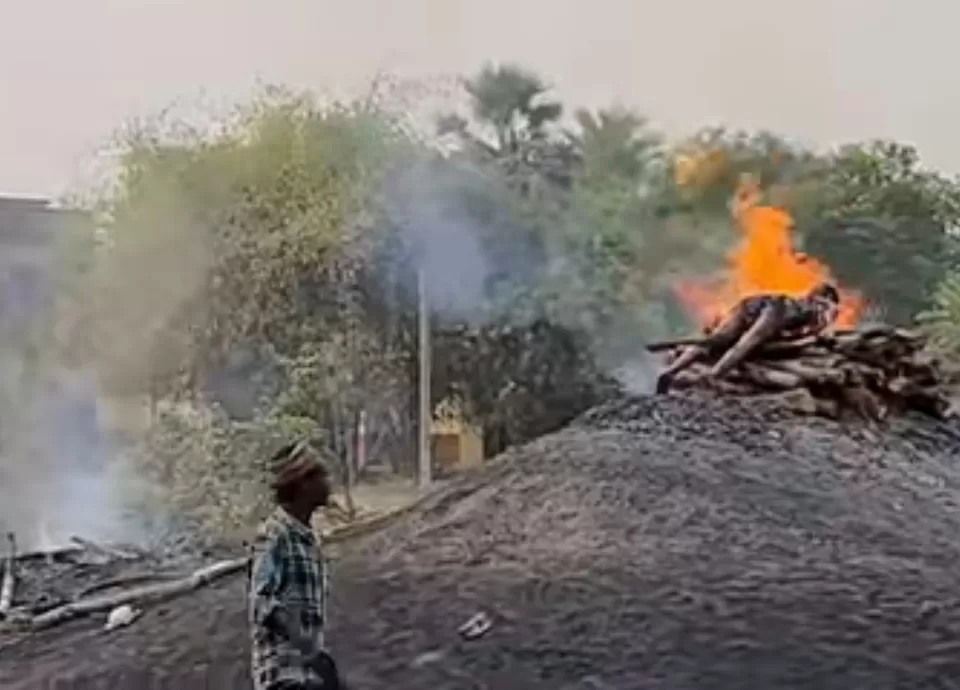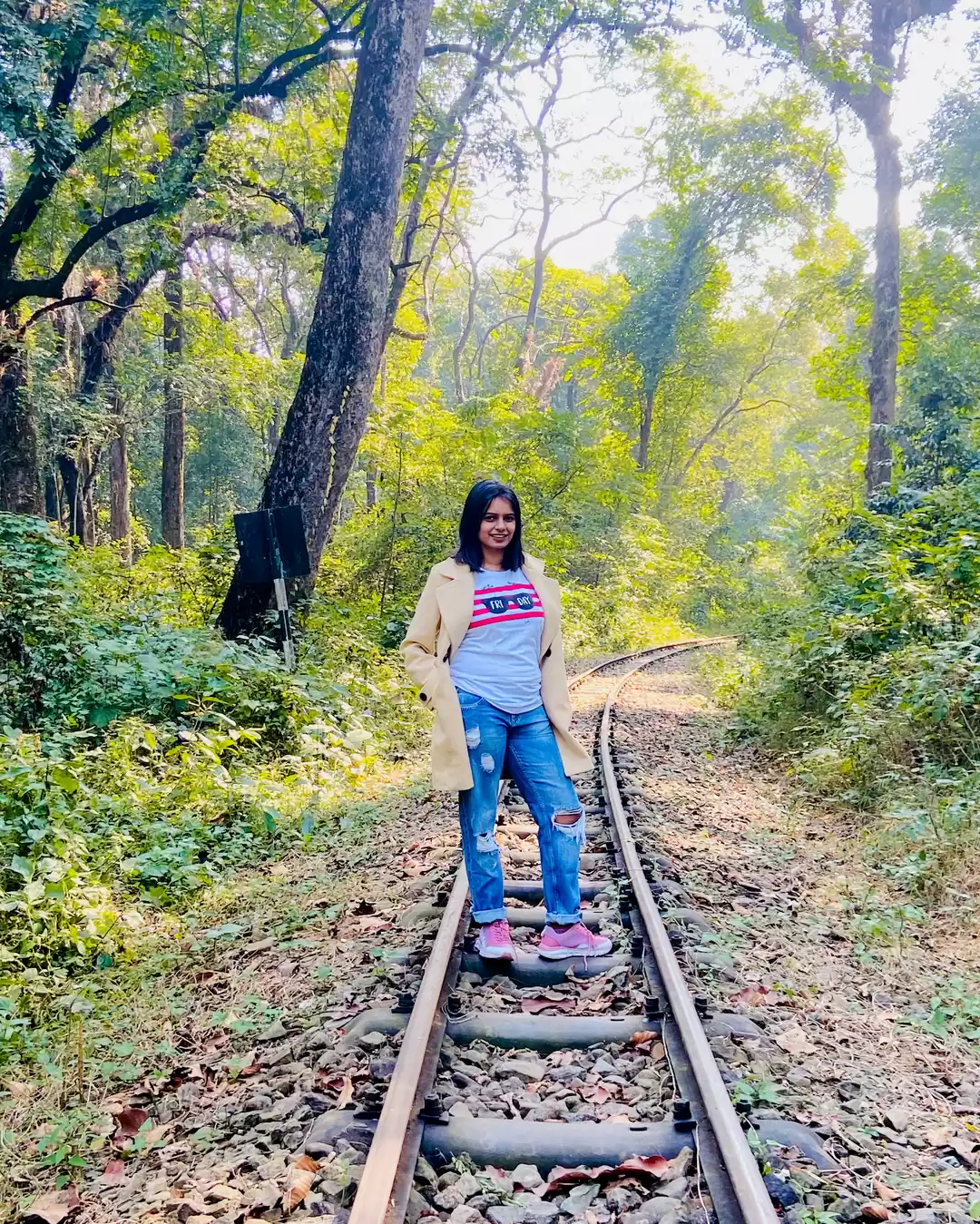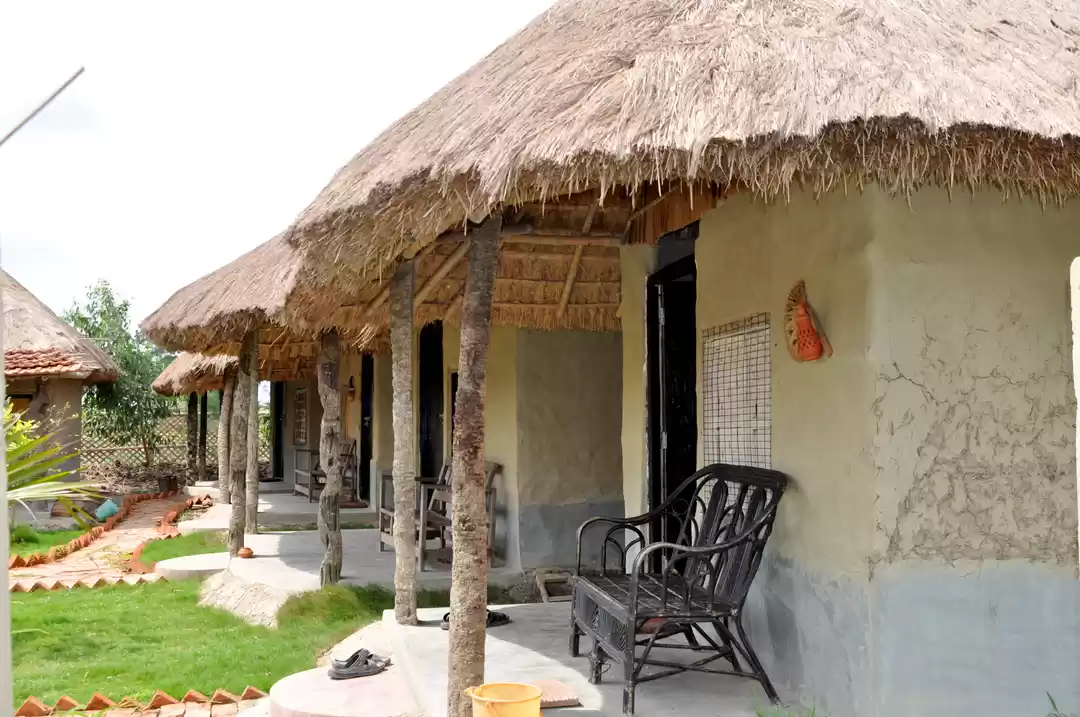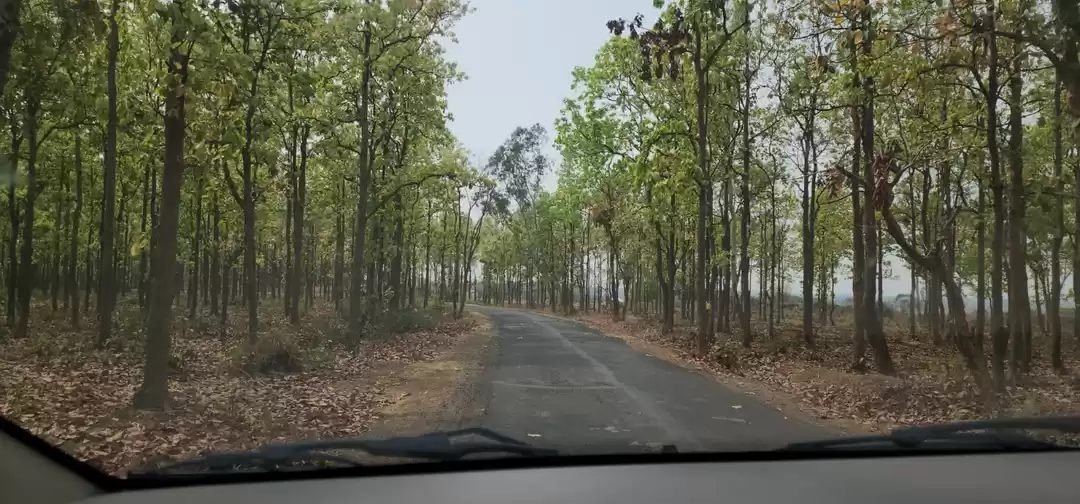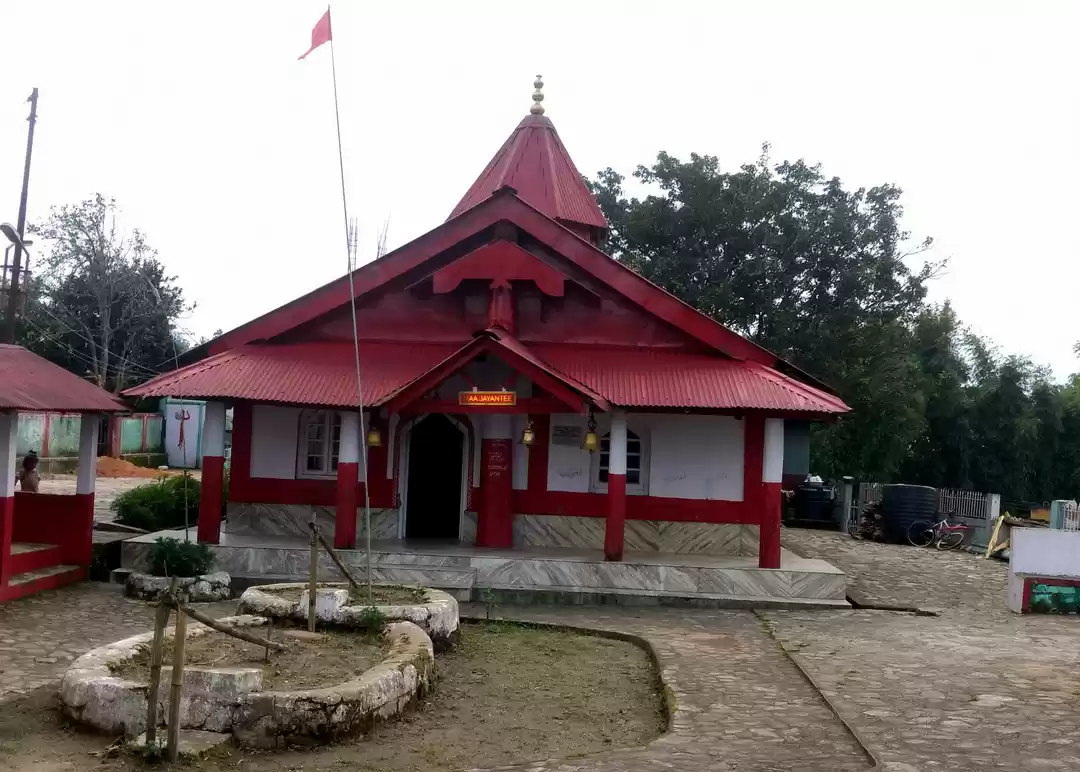In the rural precincts of West Bengal surrounded by lush paddy fields, is a medium-sized prominent tantric temple related to Shaktism sect of Hinduism, the Maa Tara temple in Tarapith. Steeped in the narrated myths!
Its fame as a pilgrimage centre with the deity of Tara enshrined in it, is due to "the temple’s founding myths, its type of worship which include blood offerings, meat and alcohol.
The hymns sung here, the powers of the nearby tank, and the inhabitants and rituals of the adjacent cremation grounds," contribute to make this temple a very special one!
The temple has been attracting devotees desirous of boons and miracles for decades now!
The main temple is a four-sided, marble block structure capped by a curved roof called a dochala, from which projects a smaller four-sided tower with its own dochala.
According to the legends, Lord Shiva's wife Goddess Sati sacrificed herself by jumping into the ritual fire in a rage of humiliation, as her father Daksh, had not invited his son in law Shiva to the Yagna (fire worship ritual) he had arranged!
Lord Vishnu used his Sudarshan Chakra (a celestial weapon) to cut Sati's body to pieces, which fell on earth. The total number of body pieces were 52, and they fell in 52 different places. These are known as the Shakti Peeths!! I can describe as Feminine Divine Energy places!!
Shakti piths are associated with the mythology of Daksha Yagna and Sati’s self immolation.
Lord Shiva roamed the entire universe wild, furious, with Sati on his shoulder started the Tandav, dance of destruction, moaning her loss. It is believed that the third eye of Sati fell right here in Tarapith, so called because the Bengali word for eyeball is Tara, Sati's fell here!
In Hinduism, the goddess Tara is the second of the Ten Mahavidyas or "Great Wisdom Goddesses", and is a form of Shakti, the tantric manifestations of the goddess!
Others say that Tarapith is not a pith but the place owes its sanctity to the fact that Sage Vashisht one of the seven Saptarishi, holy sages worshipped the Goddess Sati in the form of Tara here!
Goddess Tara is a form of Maa Kali with two hands, garlanded with snakes and adorned in sacred threads. But the Temple is symbolic of Shiva’s destructive aspect Adhya Shakti the form of Kali. Even though her form is scary and aggressive, she is always eager and ready to lend her hand of protection and help towards her worshipper. Hence Goddess Tara is also known as the ultimate goddess of sympathy among her devotees.
She is also called Kalika, Bhadra-Kali, and Mahakali. She is worshipped as the tantric depiction of Goddess Durga, who requires a sacrifice daily to satisfy her blood lust, so every morning goats are sacrificed on the altar of the Temple.
Another legend depicts that Maa Tara took the form of mother and breastfed Lord Shiva to give him relief from the intense burning pain of poison in his throat, which he had drunk and held, from the churning of cosmic oceans, Samudra Manthan! Had he not drunk it, it would have catastrophically destructed all living beings!
There are two Maa Tara images in the sanctum. The stone image of Tara under the eaves in the sanctum depicted as a mother suckling the child form of Shiva – the "primordial image", is camouflaged by a three feet metal image, that the devotee normally sees! A sight to behold with its finely crafted silver face with three eyes and a vermillion smeared mouth.
The prasad of Maa Tara is said to be a mixture of water, liquor and sindoor also called the bath water of Maa Tara, since liquor is the choice drink of the tantric saints and that of God Shiva; Goddess Tara is almost exclusively offered liquor by the devotees.
Tara in her ferocious form with four arms, wearing a garland of skulls and a protruding tongue. The enshrined image of the goddess at the Tarapith Temple is awe-inducing. The goddess sits majestically wearing a saree and a silver crown, and red vermilion in the parting of her raven hair. The foreheads of devotees are anointed with her vermilion by the temple priests as a mark of blessings. Bananas, coconuts, sweets, sarees and even liquor is offered to the goddess.
The devotees take a holy bath at the sacred tank adjacent to the temple before entering the temple premises to offer worship and even after the worship. The waters of the tank are said to have healing powers and even restore life to the dead.
Blood sacrifice of goats is the daily norm in the temple. Devotees who offer such goat sacrifices seek blessings from the deity. They bathe the goats in the holy tank near the temple before the sacrifice. They also purify themselves by taking bath in the holy tank before offering worship to the deity. The goat is then tethered to a stake, the designated post in a sand pit, and the neck of the goat butchered with a single stroke by a special sword. There is a strong smell of warm blood, moist earth, decayed flowers and incense.
A small quantity of the blood of the goat is collected in a vessel and offered to the deity in the temple. The devotees also smear their forehead with a bit of blood from the pit, as a mark of reverence to the deity.
Every day at 4 a.m. melodious Shenai is played in the temple premises to wake up the Goddess. Then the door of the Sanctum Sanctorum is opened by a group of priests who wash her feet, clean her room, and remake her bed. Before bathing the idol in the pure water of Jivitkund, the devotees apply ghee and honey to it. Then they adorn the idol with a saree, vermillion, a garland of skulls, post which the mangal aarti begins.
Another Pooja takes place in the afternoon where rice is offered to the deity as a part of the Tantric rituals. The Anna Bhog that is served after this Puja consists of rice, the meat of the sacrificed goat, rice pudding, fried fish, and five kinds of dishes.
After the Anna Bhog, the temple shuts down for a few hours to allow the deity to relax.
In the evening, the Sandhya Aarti begins, post which it is time to make the deity’s bed.
The Maha Smasan or cremation ground near the temple is one of the most mysterious places in India, amidst dark forest surroundings, the place is covered by trees and has the north flowing Dwarka River through it. It is the most auspicious site and well known for the Tantric rituals performed here!
You will find many ash-smeared dreadlocks tantric performing their tantra-puja and rituals on the cremation ground. It is believed that goddess Tara wanders here and drinks fresh blood of the sacrificed animals lying on the cremation ground. Tantric practitioners believe that Tara is attracted to bones, blood and skulls and the cremation ground is her preferred natural abode ,she lives here with her Yoginis (female spirits)!
The Tantric practioners have built their huts here and decorated them with human as well as animal skulls, those of jackals and vultures that have been deemed unfit for Tantric rites.
Skulls of virgins and people who have committed suicide are said to be powerful.
Some huts even have snake skins decorating them.
In addition, calendar pictures of Hindu goddesses, saints of Tarapith and a trishul (trident) decorated with marigold garlands and skulls at the entrance are a common sight in front of the huts. If you are especially curious about this place, you can pay it a visit, but girls are generally asked to stay away from the cremation ground.
Tarapith Temple offers you solace from the worldly chores. Visit it once to experience the bliss of the divine feminine . A different kind of devotion in modern India. It does give you goosebumps!!
I find myself very fortunate to have visited Tarapith and to have been able to partake the prasad!! All Maa Tara's benevolence!! Joi Maa Tara!
The Tarapith Temple is open to devotees every day from 6 a.m. to 9 p.m.
How to Reach
By Air: The nearest airport Netaji Subhas Chandra Bose airport is at Kolkata. One can avail taxi or bus services from airport to reach Tarapith.
By Train: The nearest railway station is Rampurhat. Taxi services from railway station to Tarapith are available. Rampurhat is well linked with Howrah and Sealdah.
By Road: The state owned and private buses connect Tarapith with Esplanade / Dharamtala bus stand of Kolkata and with the neighboring cities of the state.
Tarapith The Temple is situated in a small village of Tarapur in rural West Bengal.
There are also a few budget hotels at Rampurhat lest you should plan to stay for a few days.











